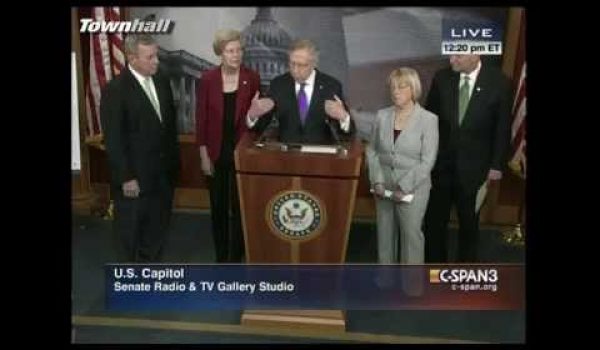
U.S. electricity rates are set to rise more than 10% by 2020 because of onerous federal environmental regulations on coal-fired power plants, according to an analysis by American Action Forum.
This means consumers could be forced to pay $150 more each year for electricity due to Obama administration power plant regulations.
A statement by the Environmental Protection Agency regarding its recently announced carbon dioxide limits for existing power plants claims the rule would “shrink electricity bills roughly 8%.” But these supposed savings come in 2030 after electricity prices increase “between 5.9 and 6.5% in 2020.”
AAF policy analysts Catrina Rorke and Sam Batkins write:
To no one’s surprise, this proposal carries high costs, burdens states with a short compliance timeline, and could threaten the reliability of national electricity markets.
But this 6.5% increase from CO2 limits is only the tip of the iceberg. Adding the 6.5% to the already projected 4.8% increase in electricity prices from EPA rules already on the books means Americans will see 10.3% higher power bills by 2020 — adding $150 to their annual power costs by the end of the decade.
Higher power costs, however, will not be spread evenly throughout the country, according to AAF. The pain will particularly be felt in regions that are more reliant on coal and are major energy producers.
For example, AAF found that the EPA’s CO2 caps for power plants would cost Texas alone $812 million in compliance costs based on the high number of fossil-fueled power plants in the state. Louisiana would have to to pay $464 million to lower their CO2 emissions based on the EPA’s proposed rule.
Other states will have a much easier time meeting EPA rules, according to AAF.
“Some states, like California, if you count their whole clean energy fleet, their already in compliance with EPA rules,” Catrina Rorke told The Daily Caller News Foundation.
California, along with nine eastern states, already have operating cap-and-trade programs as well. One of the ways the EPA is going to allow states to comply with the rule is to impose state-based cap-and-trade systems.
“This outsources passing cap-and-trade legislation to the states,” Batkins told TheDCNF. “I’m curious how many states will refuse to participate.”
States that elect the cap-and-trade option will actually get more time to comply with EPA-mandated emissions cuts — a nice incentive for some states to extend the rule’s short implementation deadline.
“It certainly takes the pressure off of EPA… it’s a lot easier from a compliance oversight perspective,” Batkins said.
The Obama administration and the EPA have tried to defend the rule by saying it would create jobs and benefit public health. But AAF analysts broke down EPA’s jobs projections and found them lacking.
EPA says its carbon dioxide limits will create 28,000 “job-years” in the “electricity, coal, and natural gas sectors” in 2020 along with 78,800 jobs in “demand-side energy efficiency employment.”
But even the EPA admits its job claims are unsupported. The agency said its job impacts “of demand-side energy efficiency programs have not been extensively studied in the peer-reviewed, published economic literature.”
AAF also notes that a “job-year” is not equivalent to an actual job. So when the EPA says 28,000 job-years, it could mean the equivalent number of full-time employees or even 56,000 part-time employees. But no matter how many job-years are created, they only last for a year.
Noted Batkins:
No one expected EPA to come out and say the rule would cut more jobs. It’s merely going to transfer jobs from one side of the economy to the other.
This report, by Michael Bastasch, was cross-posted by arrangement with the Daily Caller News Foundation.



